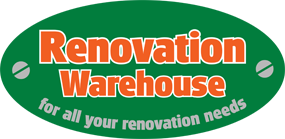Treated timber, whether it's infused with Chromated Copper Arsenate (CCA) or Micronized Copper Azole (MCA), is a popular material in construction due to its durability and resistance to pests and rot. In New Zealand, treated timber is classified into grades such as H1.2, H3, H4, etc., based on its intended use and level of treatment. However, these treatments involve chemicals that can be hazardous to your health if not handled correctly. This guide will provide essential safety tips for working with treated timber to ensure you stay protected from these harmful substances.
Understanding the Risks
Chromated Copper Arsenate (CCA) and Micronized Copper Azole (MCA) are preservatives used to extend the life of wood. While effective, they contain chemicals such as arsenic, copper, and chromium (in CCA) that pose serious health risks. Exposure can occur through inhalation, skin contact, or ingestion of sawdust and wood particles.
Essential Safety Gear
Respiratory Protection
- Use a Dust Mask or Respirator: When cutting, sanding, or working with treated timber, always wear a high-quality dust mask or respirator with a P100 filter. This prevents inhalation of fine dust particles that can contain toxic chemicals.
- Work in Well-Ventilated Areas: If possible, conduct cutting and sanding activities outdoors. If working indoors, use a dust extraction system and ensure adequate ventilation to reduce airborne particles.
Eye Protection
- Wear Safety Goggles: Protect your eyes from dust and chemical exposure by wearing safety goggles. Choose goggles that fit snugly and provide a seal around your eyes to prevent particles from entering.
Skin Protection
- Gloves and Long-Sleeved Clothing: Wear chemical-resistant gloves and long-sleeved shirts to minimize skin contact. Disposable gloves are a good option as they can be discarded after use.
- Full-Length Pants and Closed-Toe Shoes: Ensure that your legs and feet are covered to avoid direct contact with wood dust and debris.
Safe Handling Practices
Cutting and Sanding
- Use Proper Tools: Utilize saws and sanders equipped with dust collection systems. This helps capture the majority of dust at the source.
- Minimize Dust Generation: Opt for cutting methods that produce less dust, such as using a circular saw with a dust extraction attachment.
Worksite Cleanliness
- Regular Cleaning: Frequently clean the work area to prevent the build-up of dust. Use a HEPA vacuum cleaner designed to capture fine particles.
- Dispose of Waste Safely: Collect and dispose of sawdust and wood scraps properly. Place them in sealed plastic bags and dispose of them in accordance with local hazardous waste regulations.
Post-Work Hygiene
- Wash Thoroughly: After handling treated timber, wash your hands and any other exposed skin with soap and water. Change out of contaminated clothing and wash separately from other laundry.
- Avoid Eating and Drinking: Do not eat, drink, or smoke while working with treated wood to prevent accidental ingestion of chemicals.
Storage and Transportation
- Store Safely: Keep treated timber in a dry, well-ventilated area. Avoid storing near food, beverages, or areas where people frequently gather.
- Transport Carefully: When transporting treated timber, cover it with a tarp to prevent dust from becoming airborne and to protect others from exposure.
Handling treated timber safely requires a combination of proper protective gear, careful work practices, and thorough hygiene. By following these guidelines, you can significantly reduce the risk of exposure to harmful chemicals and ensure a safer working environment. Always stay informed about the specific type of treatment used on the timber you’re working with, whether it is H1.2, H3, H4, or another grade, and adhere to all safety recommendations to protect your health and well-being.
For more detailed information on the chemicals used in timber treatment and their potential health effects, consult the relevant material safety data sheets (MSDS) and guidelines provided by occupational health and safety authorities.

